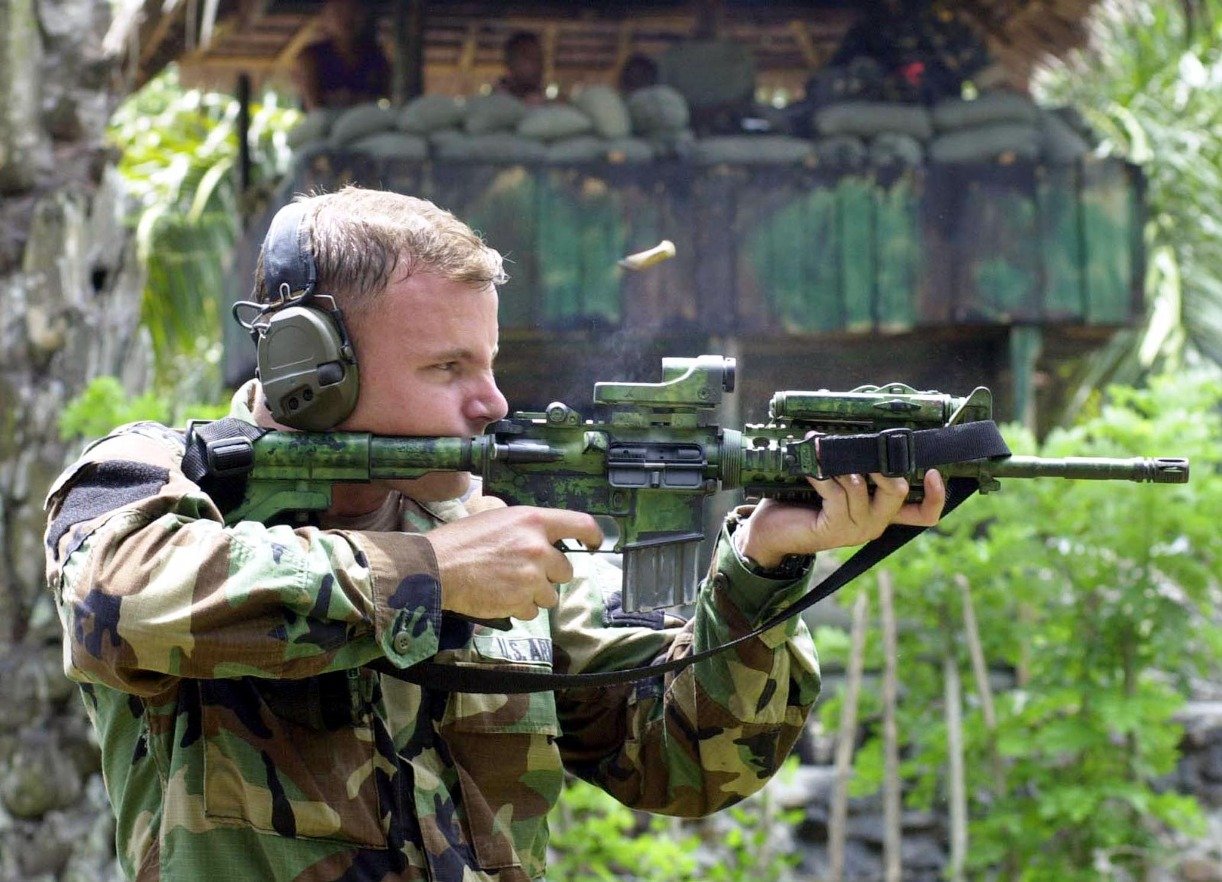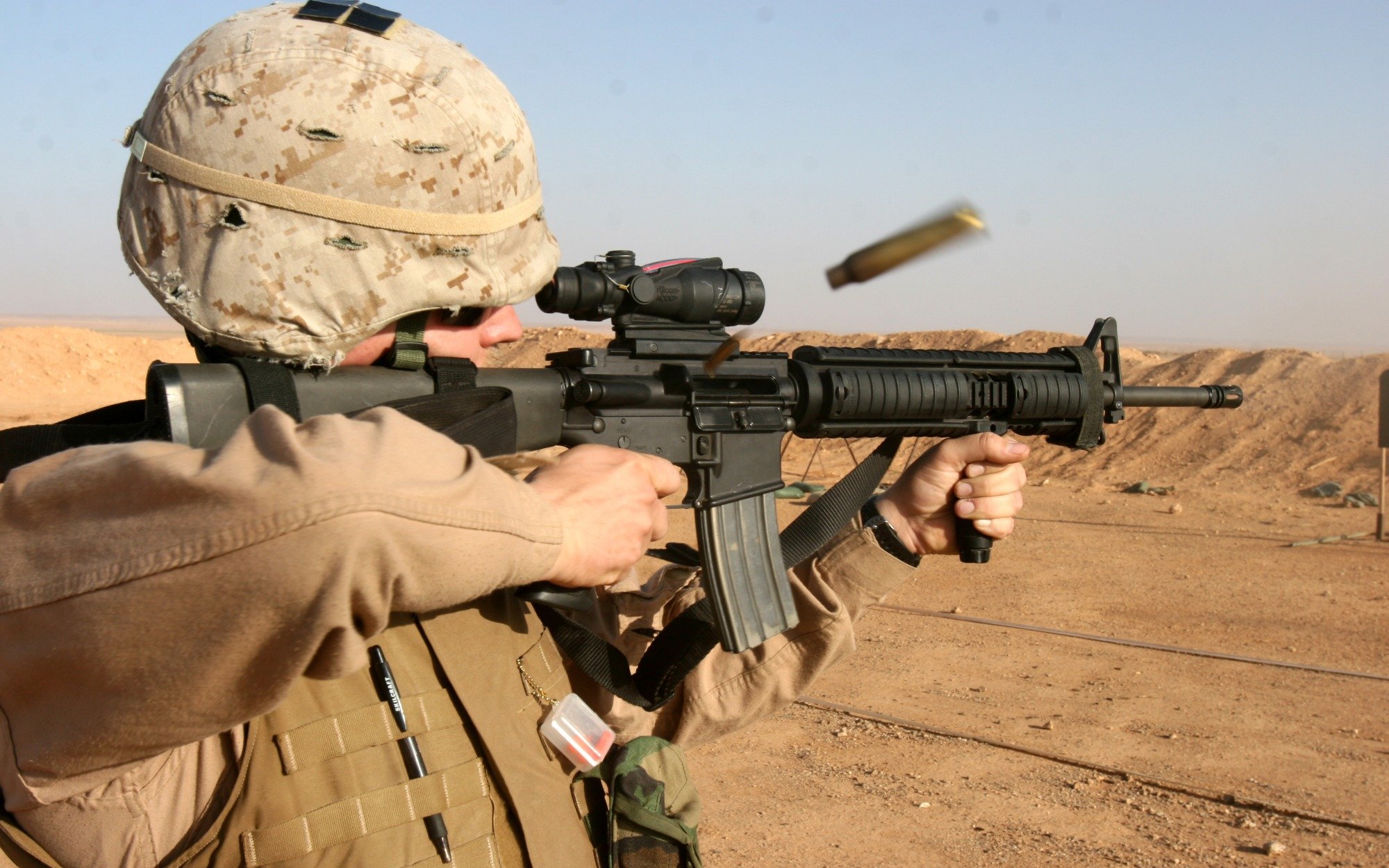Next Generation Squad Weapon: How the Army Is Replacing the M4 Carbine and M249
The U.S. Army is preparing for potential conflicts, including with China, by equipping frontline units with new rifles and machine guns under the Next Generation Squad Weapon (NGSW) program.
What You Need to Know: The U.S. Army is preparing for potential conflicts, including with China, by equipping frontline units with new rifles and machine guns under the Next Generation Squad Weapon (NGSW) program.

-These weapons, which use 6.8mm rounds, will replace the decades-old M16/M4 rifles and M249 SAW machine guns that fire 5.56mm rounds. Units in the Indo-Pacific region, including the 25th Infantry Division and the 100th Infantry Battalion, will be the first to receive these new weapons, with other divisions like the 101st Airborne and 1st Armored to follow in 2025.
-The NGSW weapons offer better accuracy, range, and penetration power, able to defeat advanced body armor.
The U.S. Army is getting ready for a war with China and issuing new rifles and machine guns to units on the front lines.
Rifles and machine guns belonging to the Next Generation Squad Weapon (NGSW) program are making their way into Army units that will be called first to fight the Chinese military.
NGSW: New Rifles and Machine Guns
Firing the 6.8mm caliber, the new NGSW rifles and machine guns are a big change for the Army. The new weapon systems will replace M16/M4 rifles and M249 Squad Automatic Weapon (SAW) machine guns that use the 5.56mm bullet and have been in service for decades.
Frontline units, especially those focused in the Indo-Pacific, are getting the new NGSW weapons first.
Specifically, in the next couple of months, the 25th Infantry Division and 100th Infantry Battalion (reserves) based in Hawaii will be getting the new weapons. Then, in early 2025, the 101st Airborne Division, 75th Ranger Regiment, and 1st Armored Division will start receiving their NGSW weaponry. Later in 2025, the 34th Infantry Division and 10th Mountain Division will be next.

“We haven’t fielded a gun in this magnitude to the close combat force since the M16 started fielding in 1967,” Army Col. Jason Bohannon, who manages the soldier lethality portfolio at Program Executive Office-Soldier, said.
“We’re fielding as the material is coming off the line, directly to the units,” Bohannon added.
But the transition to the new weapon systems isn’t total. Only units engaged in close-quarters combat with the enemy, such as special operations, infantry, combat engineers, and reconnaissance outfits, are getting the new rifles and machine guns as of now. Other support units will continue to operate the M16/M4 and M248 SAW for the foreseeable future.
However, the complete transition shouldn’t be left on the back burner because it will only unnecessarily complicate logistics in the event of a conflict, NGSW weapons won’t be able to fire ammo designed for the M16/M4/M249 SAW and vice versa.
The NGSW Program, Explained
For years the U.S. military has been debating the move from the M16/M4 5.56mm rifles, which can trace their lineage back to the Vietnam War.
To be sure, the M16/M4 are excellent rifles. But the recent engagements in the Middle East, especially in Afghanistan where engagement distances were longer, showcased that the U.S. military needed something with a stronger punch. As a result, the push for a new rifle with a different caliber of bullet began.
The move to the 6.8mm from the 5.56mm is backed by years of research. Some of the organizations that have conducted research and testing and influenced the decision to move to a new caliber of bullet include the Special Operations Command (SOCOM), Army Marksmanship Unit (AMU), and Army Armament Research, Development, and Engineering Center (ARDEC).
As for the reasons behind the desire to move to a new caliber of ammunition, they mainly center around improved accuracy, better penetration, and extended range.
“This is a weapon that could defeat any body armor, any planned body armor that we know of in the future,” the former Army Chief of Staff and Chief of the Joint Chiefs of Staff Army General (retired) Mark Milley had said when the NGSW was under development.
“This is a weapon that can go out at ranges that are unknown today and that you can see accurately.”
About the Author
Stavros Atlamazoglou is a seasoned defense journalist specializing in special operations and a Hellenic Army veteran (national service with the 575th Marine Battalion and Army HQ). He holds a BA from the Johns Hopkins University and an MA from the Johns Hopkins’ School of Advanced International Studies (SAIS). His work has been featured in Business Insider, Sandboxx, and SOFREP.
Image Credit: Creative Commons and/or Shutterstock.


